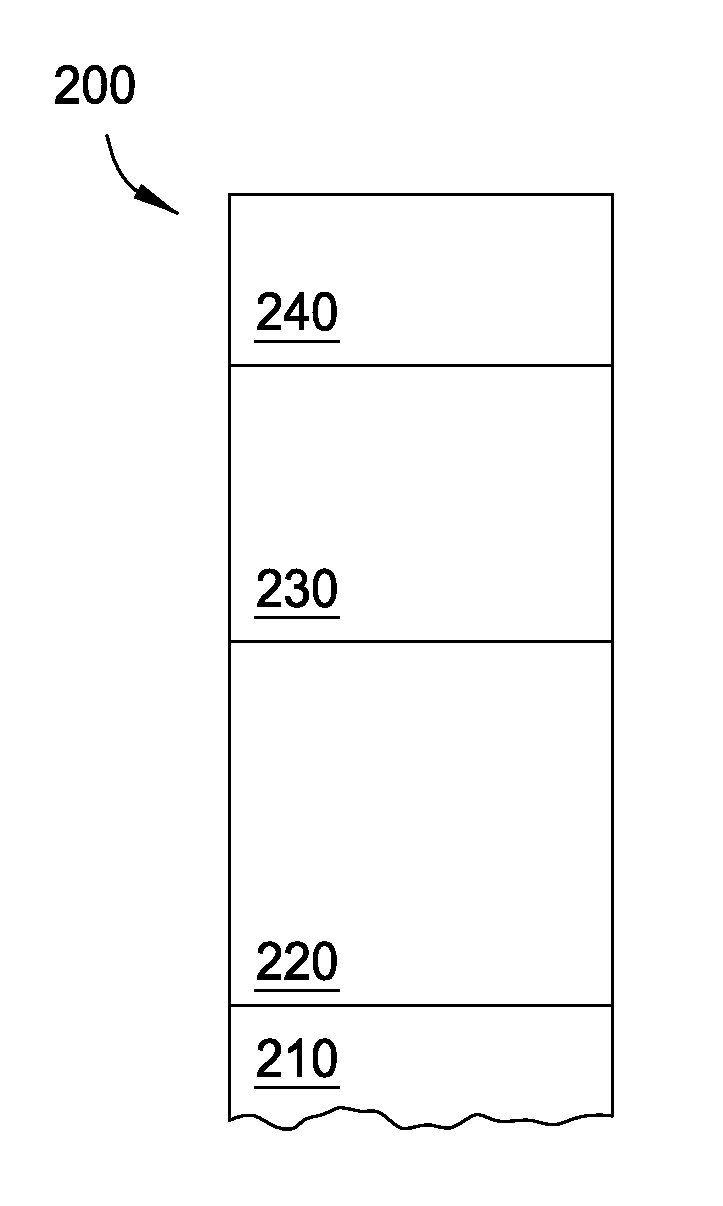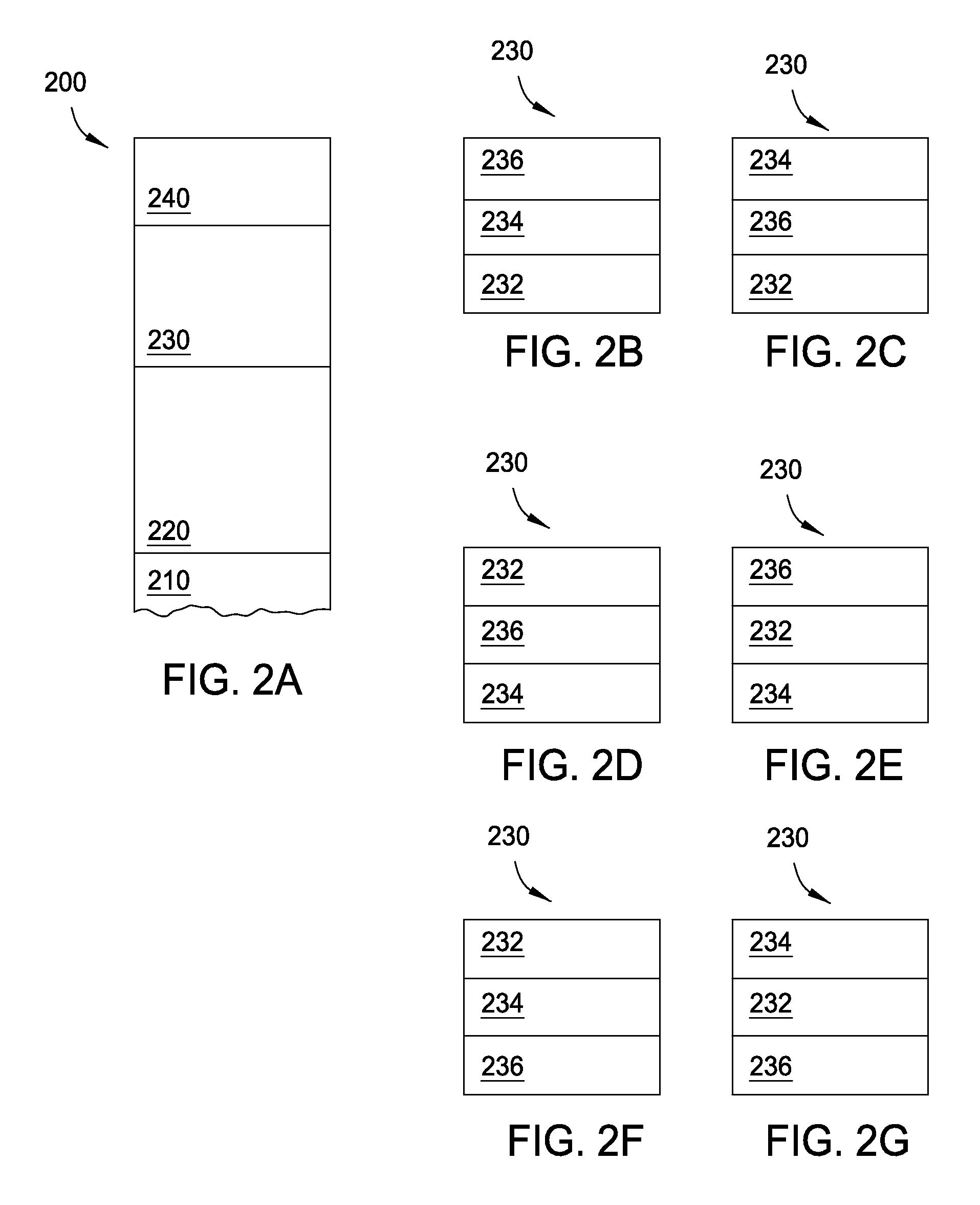Atomic layer deposition of metal oxides for memory applications
a metal oxide film and memory technology, applied in the field of memory devices, can solve the problems of insufficient resistance of low resistance metal oxide films to be used within a practical nonvolatile memory device, insufficient resistance of low resistance metal oxide films, and insufficient resistance of low resistance films to form reliable nonvolatile memory devices, etc., to achieve high aspect ratio, simple and accurate thickness control, excellent reproducibility and uniformity
- Summary
- Abstract
- Description
- Claims
- Application Information
AI Technical Summary
Benefits of technology
Problems solved by technology
Method used
Image
Examples
Embodiment Construction
[0028]Embodiments of the invention generally relate to nonvolatile memory devices and methods for manufacturing such memory devices. The methods for forming improved memory devices, such as a ReRAM cells, provide optimized, atomic layer deposition (ALD) processes for making a metal oxide film stack containing one or more hard metal oxide films and one or more less resistive or soft metal oxide films. The hard metal oxide film is deposited by a hard ALD process (e.g., more oxidizing to metal) and may be disposed at the top or bottom of the metal oxide film stack. The metal source gas (e.g., TDMAHf) and the oxidizing agent (e.g., O3) may be sequentially pulsed into the chamber and exposed to the substrate, such that the metal source gas has a much longer pulse time relative to the pulse time used for the oxygen source gas during the hard ALD process. The soft metal oxide film may be deposited using a different or soft ALD process (e.g., less oxidizing to metal), whereas a different ox...
PUM
| Property | Measurement | Unit |
|---|---|---|
| temperature | aaaaa | aaaaa |
| temperature | aaaaa | aaaaa |
| current leakage | aaaaa | aaaaa |
Abstract
Description
Claims
Application Information
 Login to View More
Login to View More - R&D
- Intellectual Property
- Life Sciences
- Materials
- Tech Scout
- Unparalleled Data Quality
- Higher Quality Content
- 60% Fewer Hallucinations
Browse by: Latest US Patents, China's latest patents, Technical Efficacy Thesaurus, Application Domain, Technology Topic, Popular Technical Reports.
© 2025 PatSnap. All rights reserved.Legal|Privacy policy|Modern Slavery Act Transparency Statement|Sitemap|About US| Contact US: help@patsnap.com



